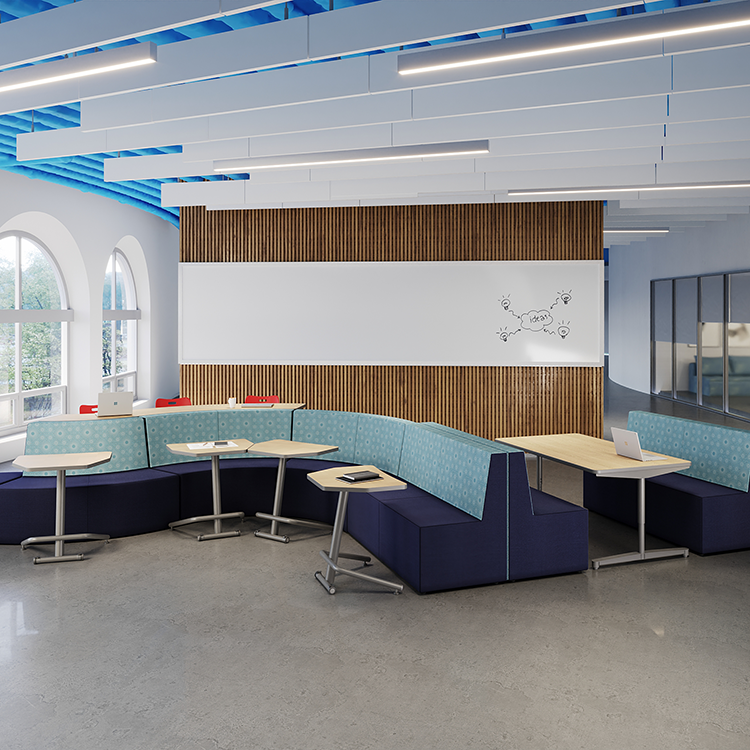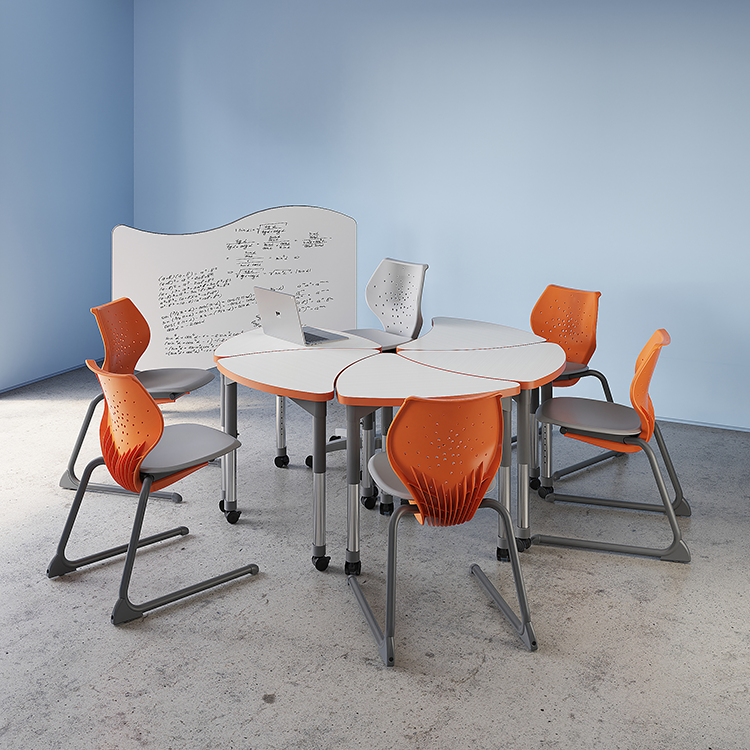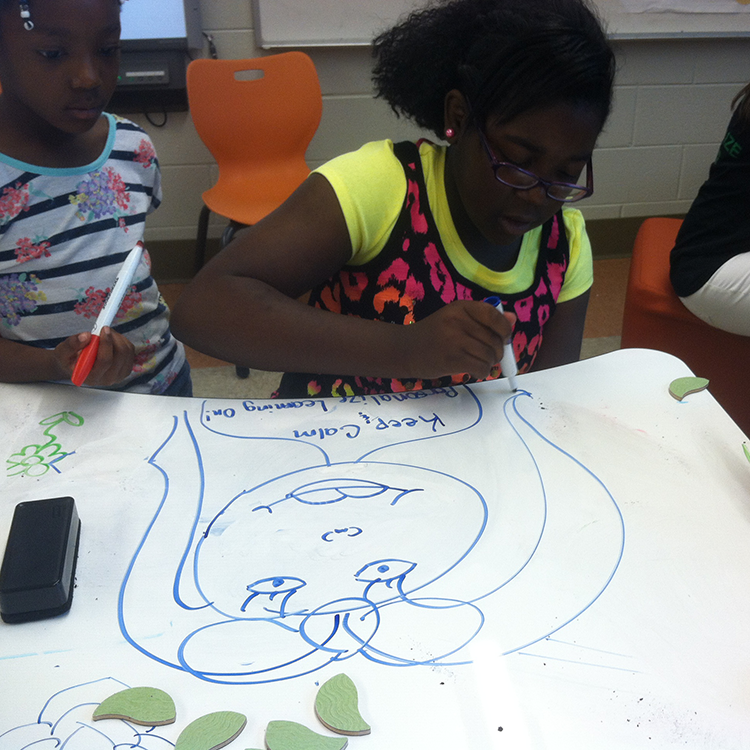How a student‑eye view — and the research behind it — transforms learning spaces for every body and brain
When you walk into a classroom, what do you notice first — the desks, the whiteboard, the storage? Now imagine entering that same room at three feet tall. Or from a wheelchair. Or with a brain that learns best while moving, making, or collaborating. Suddenly, the room looks very different.

This is the heart of a movement to design learning environments from the perspective of the students who use them every day. We believe schools should do more than house learning. They should inspire it. Through the stories of our student personas — the mover, the sensory seeker, the quiet recharger, the student who feels empowered when everything is within reach — and we’re inviting educators and designers to see classrooms as children do: places that must feel safe, comfortable, and engaging, and that adapt as learners grow.
The core drivers are honoring learner agency, removing barriers for all students including neurodiverse and physically diverse students, and creating rooms that actively teach connection. The good news: the research is clear that environments matter. In the landmark HEAD “Clever Classrooms” study, differences in classroom design accounted for roughly 16% of the variation in students’ academic progress in a single year, driven by naturalness (light, air, temperature), individualization (ownership, flexibility), and appropriate stimulation. (ScienceDirect+1) And Universal Design for Learning (UDL) Guidelines 3.0 — updated in 2024 — translate that evidence into actionable choices that prioritize equity and learner agency from the start.
Here are some research-based practices educators can use in their classroom right away as they look through their students’ eyes.
Flexible seating fuels SEL: Belonging, Agency, Collaboration

When students can choose among seating options — chairs, soft seating, floor seating, rocking stools, or quiet nooks — we communicate trust and meet diverse sensory and postural needs. This supports the basic psychological needs of autonomy, competence and relatedness (Self Determination Theory-SDT) which are the factors to success and predict motivation and well-being in education.
Teacher Tips and Tricks
Match seat to task. Help students make good choices. Guide them when needed:
- Focused independent work encourages students to sit in an ergonomically friendly chair or a movement stool.
- Pairing and sharing: students can connect on soft seating ottomans or floor seating.
- Shift to clusters: students can gather and connect on lounge sofas,
Structured choice. Post a simple seating “menu” (e.g., standard chair, sit-stand station, low seating) and teach the norms for switching. This maintains predictability while honoring autonomy — an SEL win grounded in SDT.

Trauma-informed Classroom Design Signals Safety, Calm, and Inclusion
A trauma-informed classroom is arranged and managed so students consistently feel safe, seen, and in control. Predictable routines, clear sightlines and traffic paths, calm sensory cues (such as sound, light, and visuals), and student choice in seating and proximity all lower perceived threat. When stress cues drop, students can self-regulate, connect with others, and access higher-order thinking — exactly what learning requires. For many children (including those who are neurodiverse or who’ve experienced adversity), the room itself becomes a co-teacher: it signals “you belong here,” offers ways to downshift big feelings, and provides multiple on-ramps back to learning.
That’s why trauma-informed design isn’t a trend; it’s a foundation. It’s a principle that allows the brain to move from survival to learning. This simple brain-based frame explains the “why”:

- Prefrontal Cortex — “Wise Owl”: planning, problem‑solving, self-control (what learners need most).
- Amygdala — “Guard Dog”: scans for threat; triggers fight/flight/freeze.
- Hippocampus — “Elephant”: processes and stores memory and emotion
(Adapted from Focused Kids Brain Empowerment lessons.)
Under stress, the Guard Dog takes over, and the Wise Owl goes quiet. Trauma-informed frameworks focus on reducing threat cues and supporting regulation.
Four Pillars to Build into Your Layout Today:
- Safety & Predictability: Clear sightlines; uncluttered traffic paths; labeled zones; consistent routines posted visually. These reduce cognitive load and anxiety for many learners, including those with trauma histories. Trauma Sensitive Schools
- Empowerment & Choice: Offer consent-based proximity and choice of seats; allow “back‑to‑wall” positions for hypervigilant students; teach self-selecting a quiet nook.
- Connection & Trust: Use semicircles for dialogue — arrangements that support communication and equitable participation.
- Collaboration & Reflection: Pair active group areas with calming spaces where students can regulate and return to learning.
Why Should We See Classroom Design Through Their Eyes Nnow?
When we design from the student’s vantage point, we answer these needs:
- Can I see and hear clearly?
- Do I have a safe “home base” and predictable paths?
- Do I have agency over where and how I learn?
- Can I participate fully with my body and brain?
When classrooms answer “yes,” the Wise Owl is online, the Guard Dog is calm, and the Elephant can do its memory work.
This is the promise of Through Their Eyes — a movement by Artcobell to integrate flexible seating, trauma-informed principles, and UDL, not as trends but as evidence-informed design for thriving, inclusive classrooms. Join us: explore the student stories, meet the kids, and imagine what education can become when we design learning environments through their eyes.

